An amazing quantity of exotic materials flows through our households every day.
As a part of 1) my quest to divert some of the more charming of these objects away from the dumpster and 2) my need to reduce the volume of my in-studio recycling bins, I made this wrap.
I started with a long yellow foam tray that once held chicken breasts. I cut it in half and glued the two halves together. That leaves an almost-closed box; only the bottom is open.
Resolving to solve that later, I began to trim out the yellow box. The edge where the halves join I covered with a white cord taken from a shopping bag. I then glued dark-green chenille stems into vertical depressions in the foam tray. I glued orange-juice caps in a column between the stems. I clipped small shiny red beads from a scrap of bead-cord and glued them into the eye-shaped molded depressions in the foam tray.
After a bit of testing, I chose another foam tray for the base. I trimmed off the lip that runs around its edge and glued on a scrap of lime-colored ribbon. Then I placed the gift inside the yellow shell. I made a door in the base foam, so the gift could be removed without destroying the wrap; I taped the door shut. I glued the two foam objects together.
I was not yet ready to stop. The wrap seemed to want more. I glued a piece of black bag-handle cord to the join between black and yellow foam. Adding these extra components have a powerful effect. The identity of the foam as food-packaging trash begins to recede, and the underlying power of the foam’s native form and its beautiful qualities asserts itself.
Thus inspired I took a single scrap of thick white foam from my tiny-foam-scraps bag. I cut it in half and had two Cycladic ears (c.f. church architecture of Santorini), which I glued to the top of the wrap. Picking up conceptual momentum, I added the red/white bag-handle cord. And I added the gold fringe ribbon to the ears.
I stood back and contemplated the wrap. It had a new and mysterious appeal, all its own, of numinous packaging.
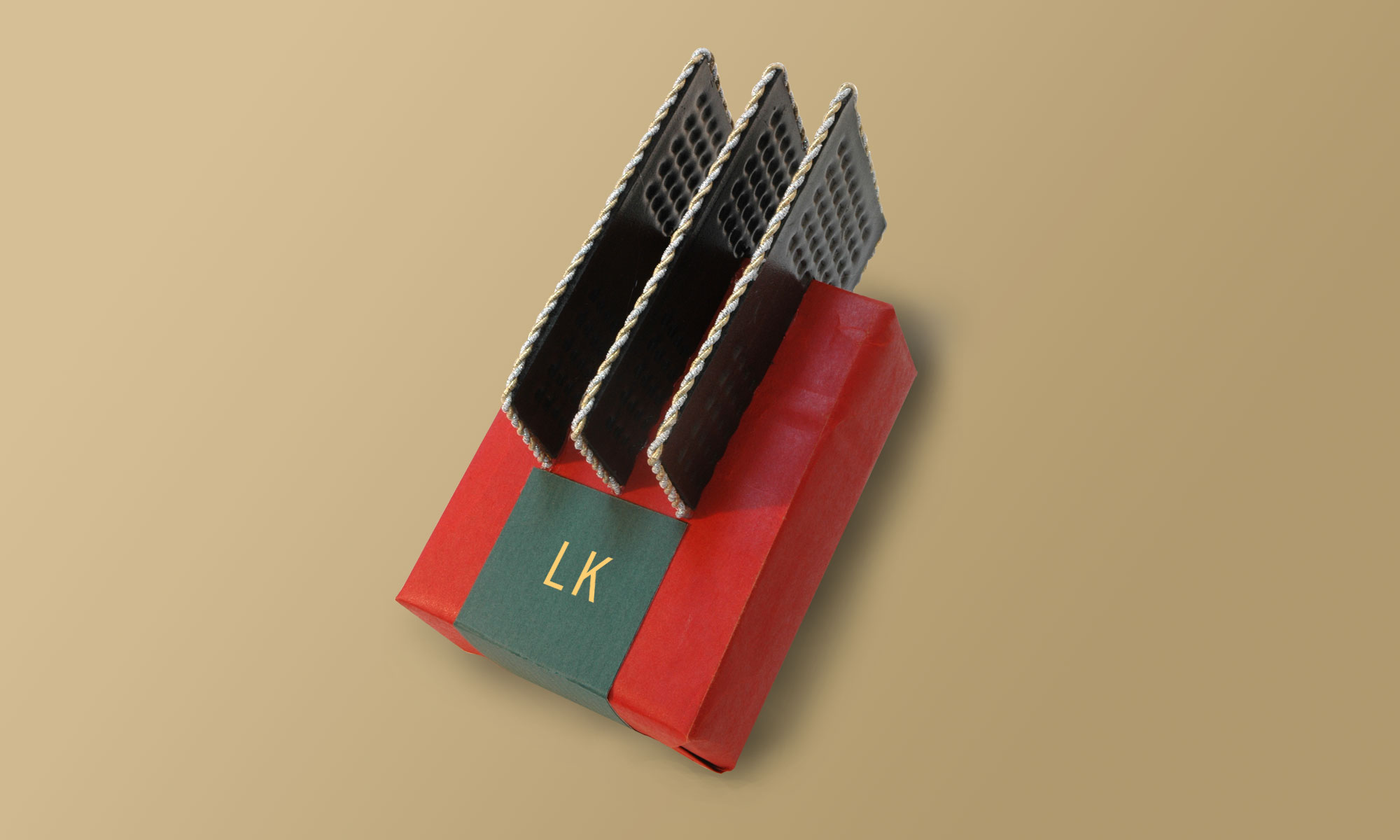
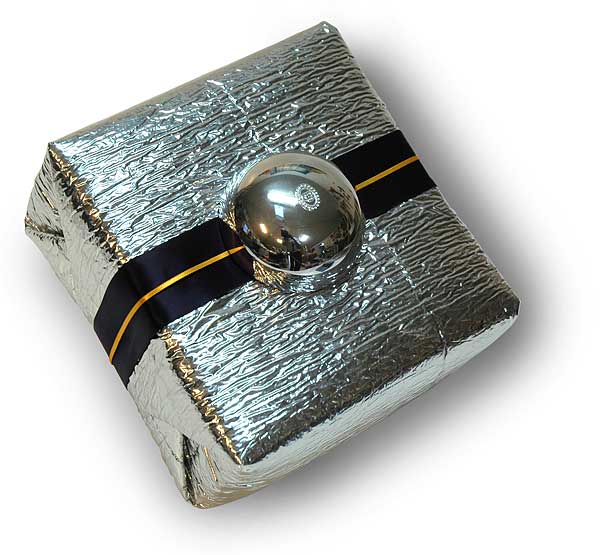
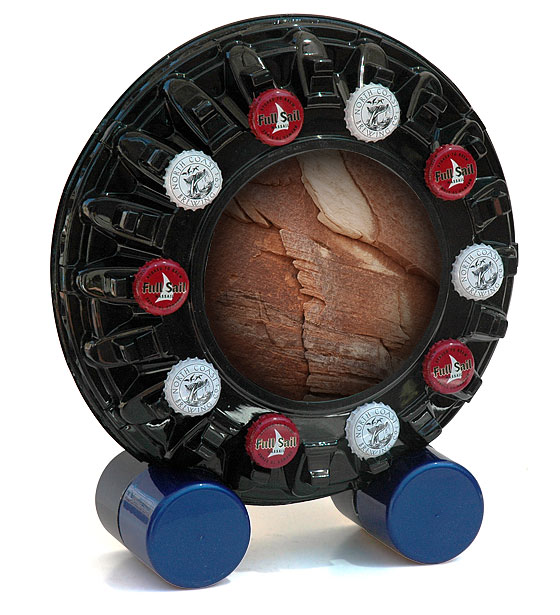
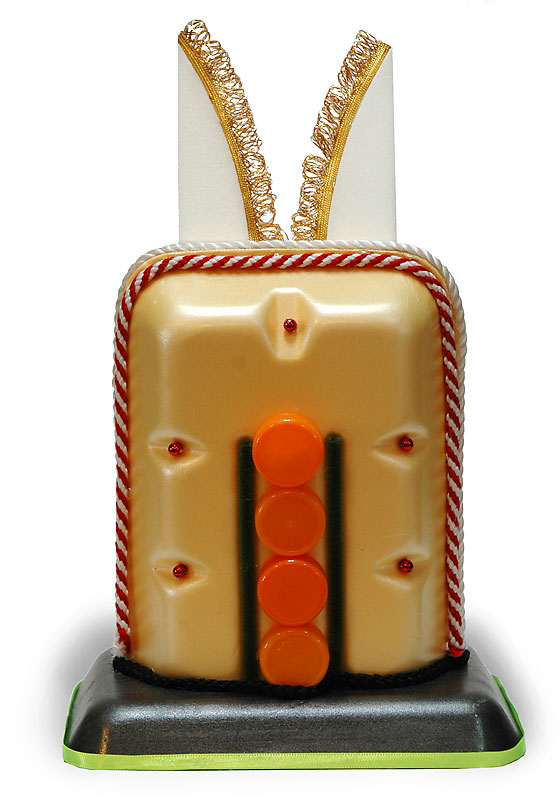
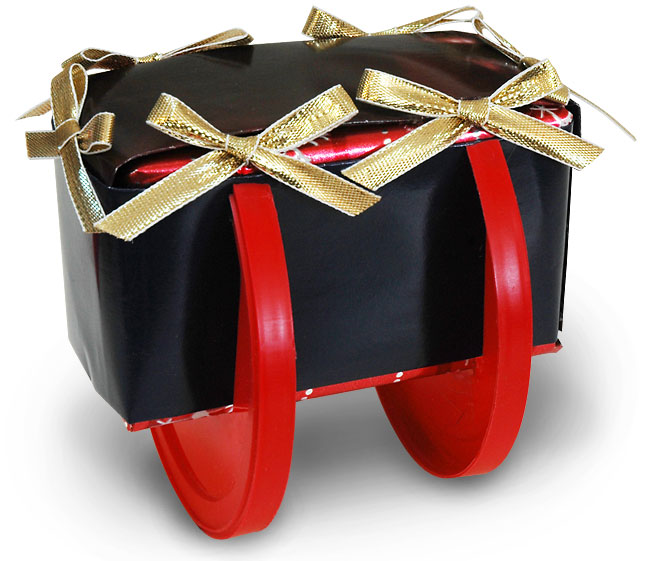
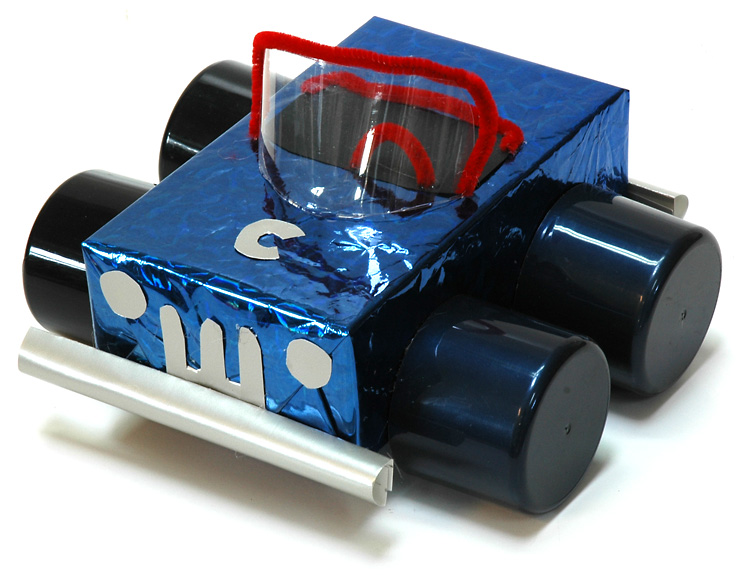
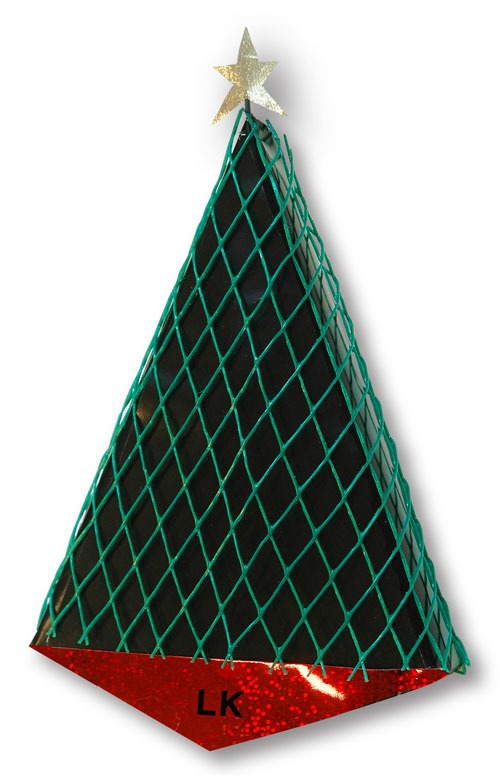
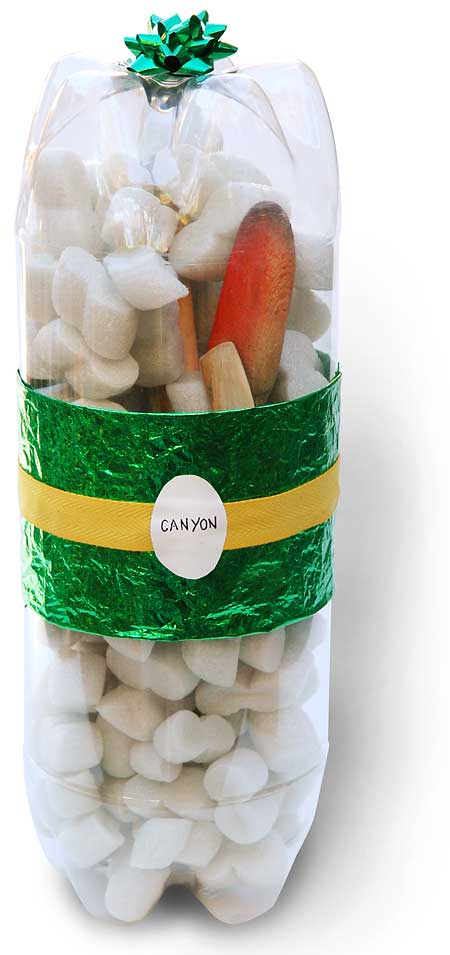 Today’s wrap embraces the 21st century’s mandate for greater transparency in all things. I was giving a small sculpture commemorating son Canyon’s 20th birthday, and I had the idea of using the same two-cylinder recycle-wrap design that I had used two weeks ago with shaving can lids. This time I would use PET soda bottles.
Today’s wrap embraces the 21st century’s mandate for greater transparency in all things. I was giving a small sculpture commemorating son Canyon’s 20th birthday, and I had the idea of using the same two-cylinder recycle-wrap design that I had used two weeks ago with shaving can lids. This time I would use PET soda bottles.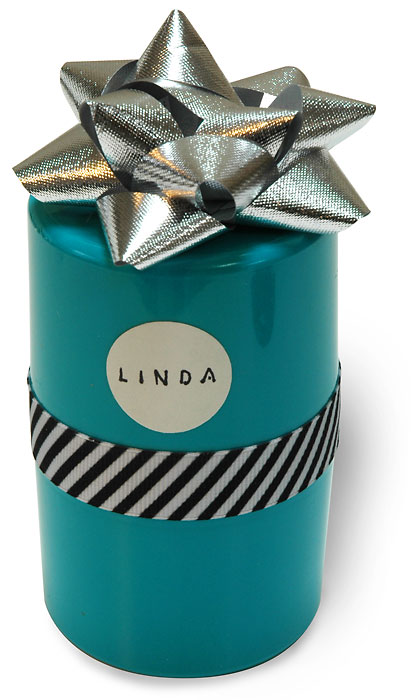
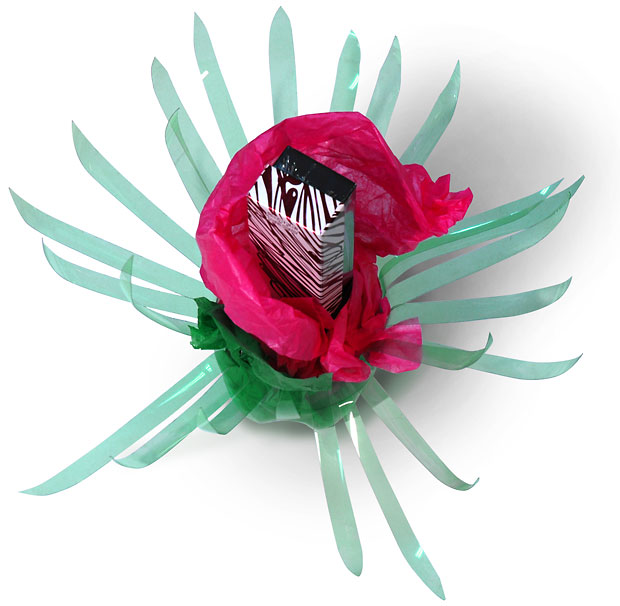 Today I made a birthday gift wrap for Linda using the poster-child material of the recycling craft world, the polyethylene terephthalate (PET) soft-drink bottle.
Today I made a birthday gift wrap for Linda using the poster-child material of the recycling craft world, the polyethylene terephthalate (PET) soft-drink bottle.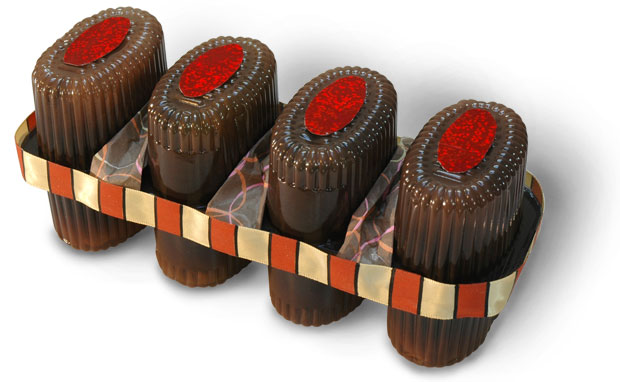 Continuing my fascination with the transient and expendable plastics of food packaging, I have been saving the flimsy molded materials found inside cookies, and candies. These translucent brown pieces from madelaine packages caught my eye because they look like tall cooking molds.
Continuing my fascination with the transient and expendable plastics of food packaging, I have been saving the flimsy molded materials found inside cookies, and candies. These translucent brown pieces from madelaine packages caught my eye because they look like tall cooking molds.